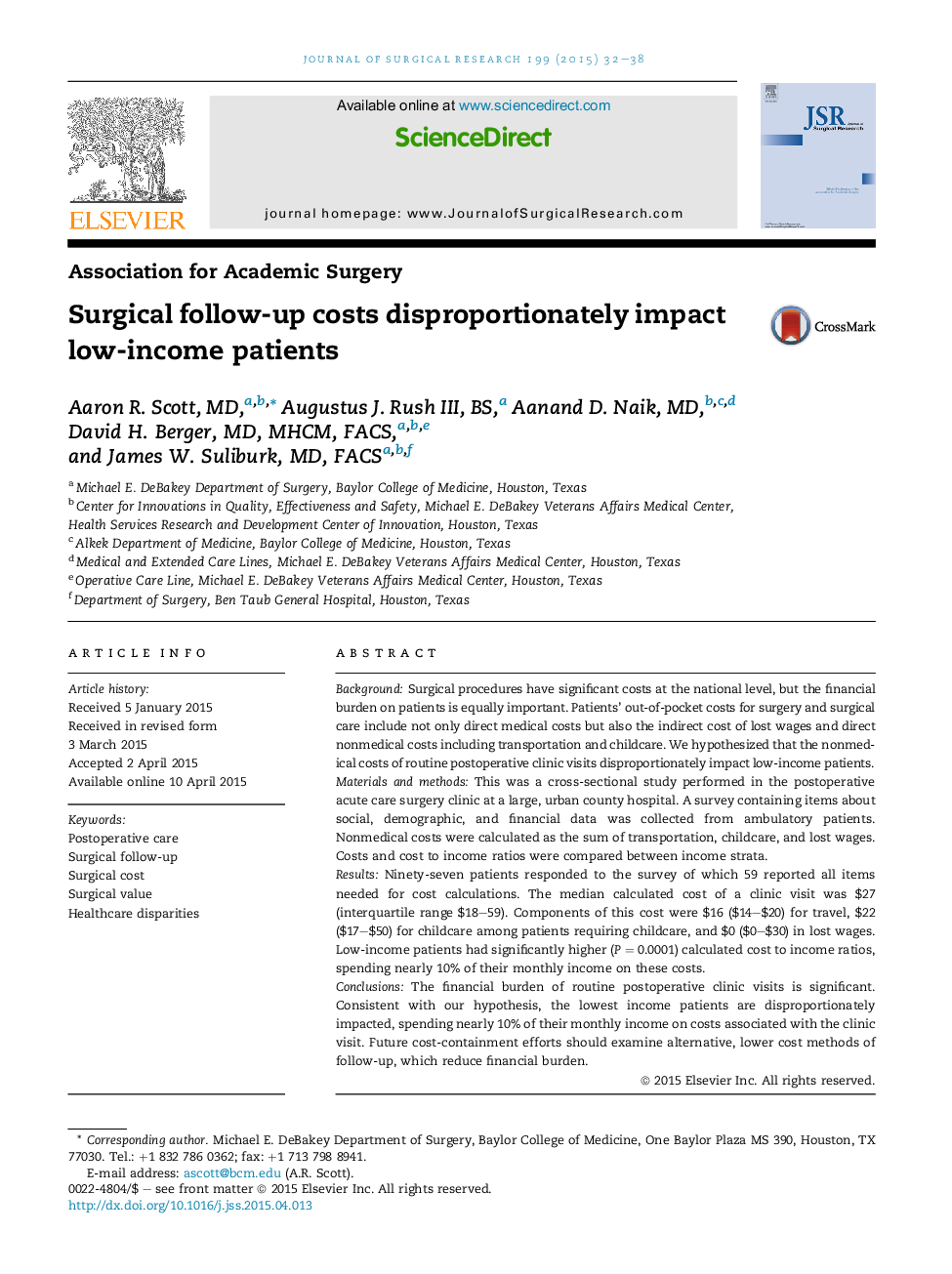| Article ID | Journal | Published Year | Pages | File Type |
|---|---|---|---|---|
| 4299589 | Journal of Surgical Research | 2015 | 7 Pages |
BackgroundSurgical procedures have significant costs at the national level, but the financial burden on patients is equally important. Patients' out-of-pocket costs for surgery and surgical care include not only direct medical costs but also the indirect cost of lost wages and direct nonmedical costs including transportation and childcare. We hypothesized that the nonmedical costs of routine postoperative clinic visits disproportionately impact low-income patients.Materials and methodsThis was a cross-sectional study performed in the postoperative acute care surgery clinic at a large, urban county hospital. A survey containing items about social, demographic, and financial data was collected from ambulatory patients. Nonmedical costs were calculated as the sum of transportation, childcare, and lost wages. Costs and cost to income ratios were compared between income strata.ResultsNinety-seven patients responded to the survey of which 59 reported all items needed for cost calculations. The median calculated cost of a clinic visit was $27 (interquartile range $18–59). Components of this cost were $16 ($14–$20) for travel, $22 ($17–$50) for childcare among patients requiring childcare, and $0 ($0–$30) in lost wages. Low-income patients had significantly higher (P = 0.0001) calculated cost to income ratios, spending nearly 10% of their monthly income on these costs.ConclusionsThe financial burden of routine postoperative clinic visits is significant. Consistent with our hypothesis, the lowest income patients are disproportionately impacted, spending nearly 10% of their monthly income on costs associated with the clinic visit. Future cost-containment efforts should examine alternative, lower cost methods of follow-up, which reduce financial burden.
